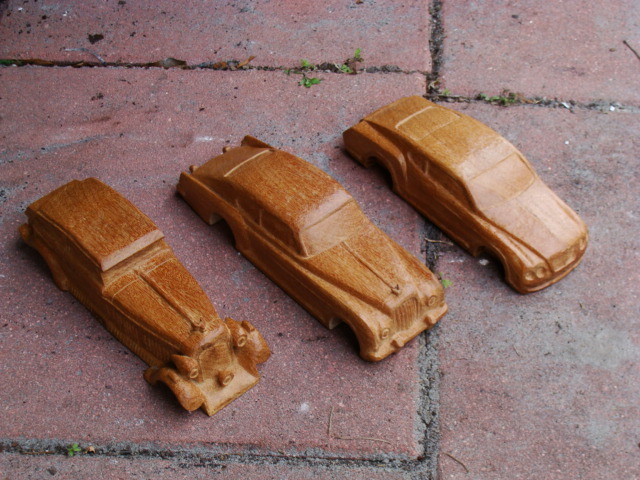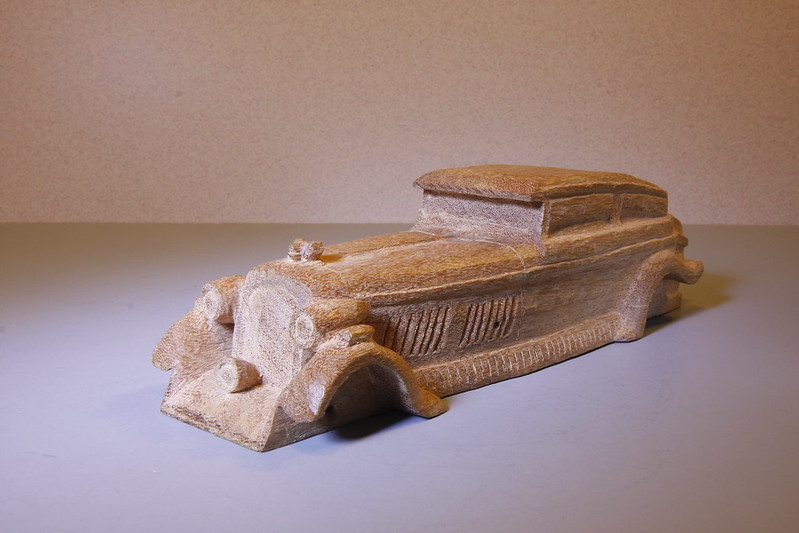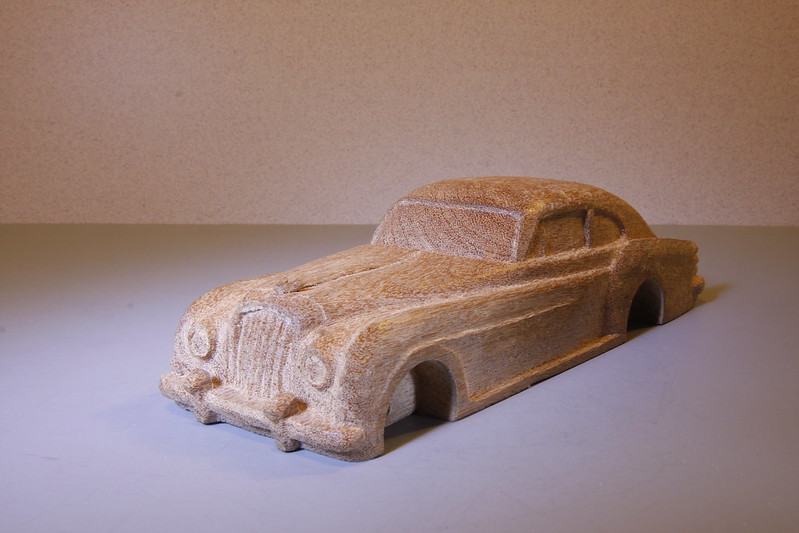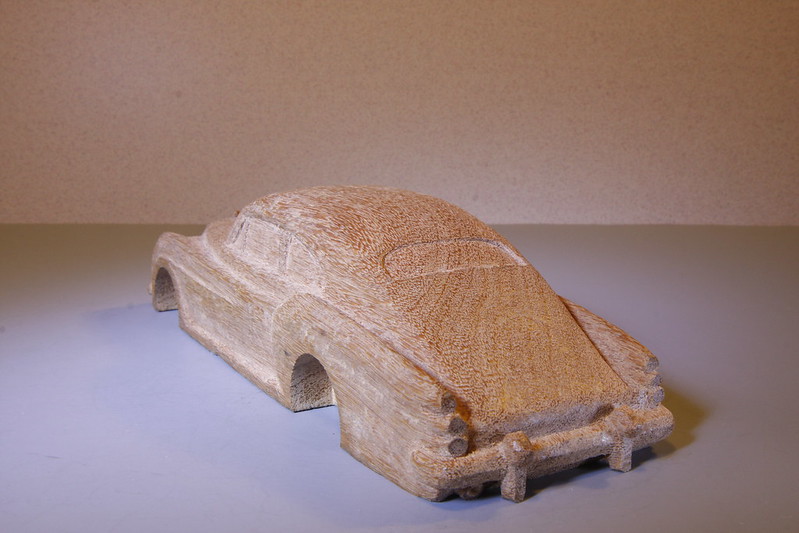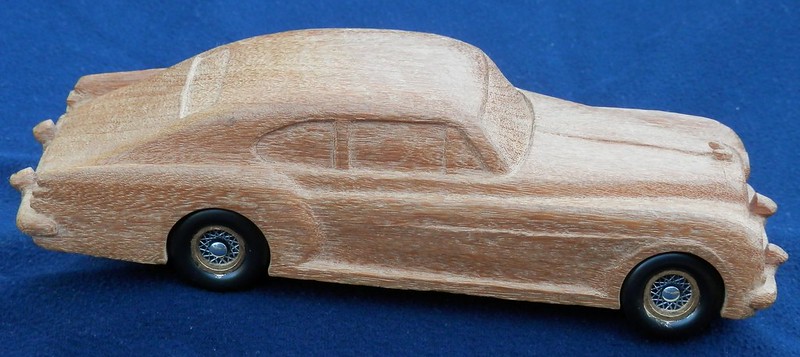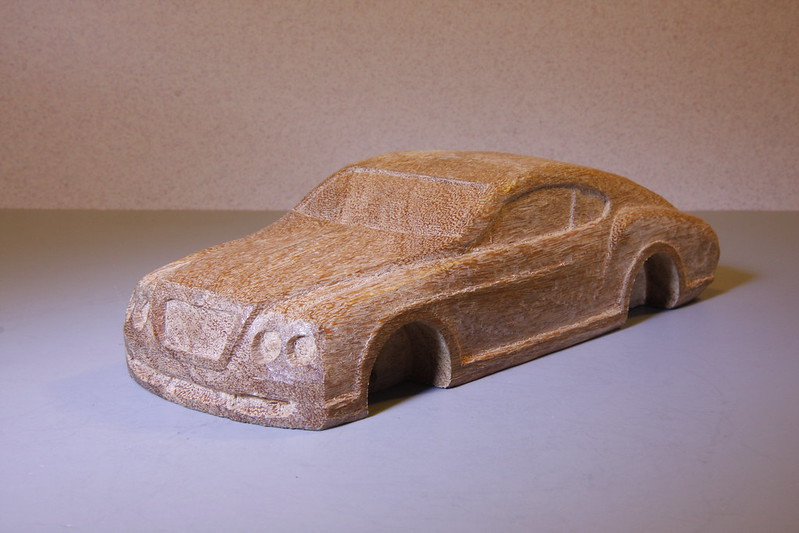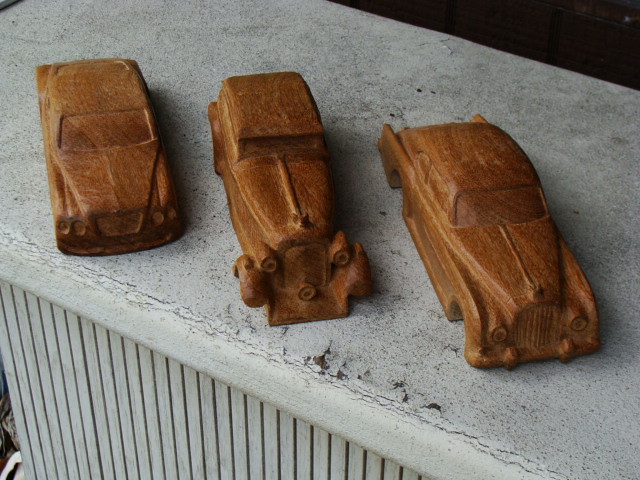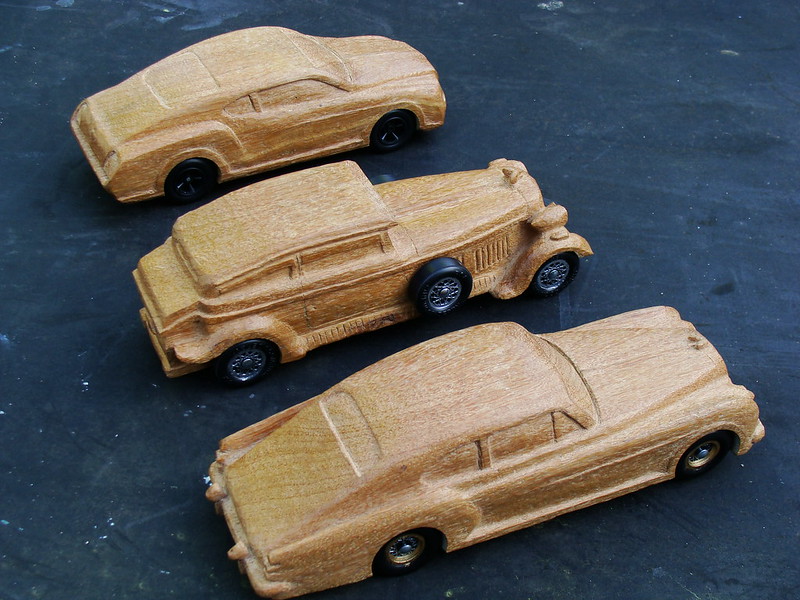THE STUDS/ Group 2: W.O. AND THE BENTLEY’S
The name Bentley conjures images of fine hand-crafted luxury automobiles full of finely crafted leather with lovely walnut trim. The brand is famous for its elegance and craftsmanship but Bentley was supposedly the racing arm of Rolls-Royce. However I never had seen a Bentley at a drag strip or lined up at Daytona to run the tri-oval against Dale Jr. I came of age in the late sixties and early seventies when the muscle cars were the coming into popularity and Bentley was thought of as a model of Rolls Royce similar to the way that Corvette is a model of Chevrolet, not a distinct brand. You did not see Bentley’s on the road or on television except for a rare James Bond film. Rolls Royce was better known as a luxury car for the extremely wealthy and I always thought of Bentleys in the same light. However, the history of Bentley Motors is a tale of a man’s dream come true with his innovative engineering that dominated the racing circuit while he created a loyal clientele for his products. However, Bentley Motors was encumbered by bad financing, deception and revenge which took the storied marquee from the victory circle at the 24 Hours of LeMans to becoming a bargaining chip in war for Rolls Royce and eventually sold to the German company Volkswagen.

Walter Owen Bentley was known as W.O., was a man with a vision and a burning desire to build his own car. W.O. began work at age 16 as an apprentice railway engineer with the Great Northern Railway in Yorkshire, where he learned all the technical procedures from design to casting and building complex machinery. W.O. advanced to the rank of second fireman on the Express, but after shoveling the seven-tons of coal required to power the locomotive for the 400 mile trip, W.O. decided that being a railway engineer ‘did not hold enough scope for a satisfying career’, so he spent a brief period studying engineering at King’s College in London. Next W.O. went to work for the National Motor Cab Company and was responsible for the maintenance for 250 cabs where W.O. became intrigued by the way the cabbies manipulated the meters in their cabs.
In 1912, W.O. and his brother Horace Millner Bentley (Henry) created Bentley and Bentley selling French made DFP cars. W.O. was convinced that the best way to market these cars was by successful participation in competition. W.O. was inspired by an aluminum paperweight at the DFP factory and had a set of aluminum pistons and a tuned crankshaft made for a DPF engine. W.O. put the engine in a DPF car and it took several records at Brooklands Races in 1913 and 1914.
World War I erupted and W.O. thought his aluminum pistons should be used amongst the engine manufacturers for the war effort, but security ruled out broadcasting of the idea. W.O. contacted Commander Wilfred Briggs at the Navy about the idea, and after its approval, Briggs became W.O.’s senior officer for the rest of the war. W.O. was given a commission in the Royal Naval Air Services and sent to tell the manufacturers about his aluminum pistons and motor modifications. The first person he went to see was Lord Hives at Rolls Royce, who was head of the Experimental Department after designing the first aero engine named the Eagle Engine. The result was that the aero engine had aluminum pistons but the personal animosity produced between the two men over uncontrollable development budgets sowed the seeds for a feud that would radically change the lives of both men.
After W.O.’s time at Rolls Royce, he went to the French manufacturer Clerget who was making aero engines, but they were unwilling to change their designs. The Navy sent WO to Humber in Coventry where he was given a design team and they produced a new engine known as the Bentley Rotary 1 or BR1 that was first tested in the summer of 1916, and found its way into the Sopwith Camel biplane which became the most successful fighter plane of World War I by shooting down the most enemy planes in the war.
WO had always dreamed of designing his own car bearing his name. After the war, WO and his brother Henry registered Bentley Motors Ltd in 1919. The first Bentley 3-litre engine began development in New Street Mews, Baker Street, London in October of 1919. Bentley Motors exhibited a chassis and a dummy engine named EXP-1 at the Olympia Motor show in London on October in 1919. Clive Gallop, an officer of the Royal Flying Corps, designed an innovative new 3-litre engine. This new engine featured W.O.’s revolutionary aluminum pistons, an overhead cam shaft operating four-valves for each cylinder; dry sump lubrication and the cast iron head and block were one piece, which eliminated blown gasket problems. It would take years for other companies catch up with these technological advancements. The new motor was built and running by December, with deliveries set for June in 1920. The development took longer than expected and the first cars were delivered in September of 1921. These cars were made at the small factory built in 1920 on Oxgate Lane in the Cricklewood area in northwest London.
Bentley cars enjoyed wide spread acclaim for speed and durability during appearances at various racing venues, including the 1922 Indianapolis 500. A skeptical Bentley was persuaded to attend the first LeMans race in 1923, but was delighted when the privately entered Bentley of Duff and Clement took fourth place. A 3-litre Bentley won the Le Mans race in 1924 and W.O. Bentley’s motto became “To build a good car, a fast car, and the best in its class”.
Bentley cars set many records at LeMans race but Woolf Barnato, one of the famous “Bentley Boys” was the only driver to win each of the three times that he entered the race giving him the highest victory percentage. However the 1925 Le Mans race was a complete failure for W.O. and his team, and the company was in deep financial trouble. W.O. was criticized by the board and the solution to the financial problems were that Barnato bought the business assets and the company continued as before but now Barnato was the chairman and W.O. Bentley was now Barnato’s employee. This action saved the business and allowed WO Bentley to design another generation of cars.

Woolf Barnato was from a family who controlled diamond mining in South Africa and was quite wealthy. Barnato had an insatiable desire to excel at whatever he attempted and he was a member of a group of wealthy British motorists known as the Bentley Boys, because they drove Bentley sports cars and competed in many racing events, often winning and keeping the companies reputation for performance alive. Barnato bought his first Bentley in 1925, and now owned the business 12 months later.
A new six-cylinder motor was announced in 1925 displacing 6.6 litres and was equipped with all of the features of the 3 litre motors to ensure Bentley’s racing future. The Bentley 6 ½ Litre was closed body car, inspired by the Rolls Royce Phantom I.
In 1927 a 41/2 Litre motor was developed to replace the 3 Litre motor with W.O. Bentley inventing the popular phrase “There’s no replacement for displacement” at this time. Most of the Bentleys sold were used as touring cars, but their reputation for competition helped promote the brand. Manufacturers like Bugatti and Lorraine-Dietrich focused on designing cars that competed in the 24 Hours of Le Mans endurance race, where a victory could elevate a car maker’s reputation rapidly.
Tim Birkin was one of the Bentley Boys who preferred forced induction rather than increasing displacement to gain power. Birkin had the idea to fit a supercharger on a light weight 4 ½ Litre Bentley. However, Bentley Motors refused to produce the supercharged model. W. O. Bentley believed that “to supercharge a Bentley engine was to pervert its design and corrupt its performance”. With Barnato now in control of the company and approving the idea, Bentley could not halt Birkin’s project. Birkin created the car with the aid of Clive Gallop and supercharger specialist Amhurst Villiers in Hertfordshire. When Birkin’s money ran out, he turned to Dorothy Page, a well known race horse breeder and gambler to help finance the project.

W.O. Bentley was chief engineer of the company and he refused to modify the engine to incorporate the supercharger. As a result, the supercharger was placed at the end of the crankshaft and stuck out in front of the radiator giving the car its unique appearance. This arrangement made the car have a tendency to under steer since all the weight was added to the front of the car. Guards were used to protect the carburetors and the fuel tank in the rear because a flying stone had punctured the 3-Litre car during a race contributing to its defeat. Once completed, the Blower Bentley produced more horsepower than the Bentley 6 ½-Litre motor.
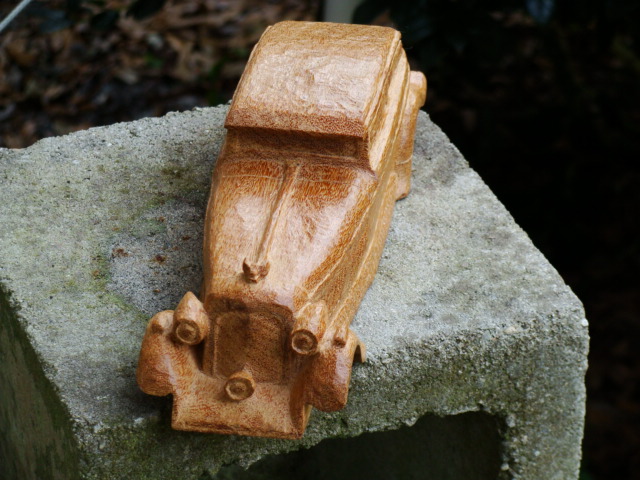
Bentley Blower No1 was officially presented at the British International Motor Show in 1929 at Olympia in London. The cars first race appearance was at the Essex six-hour race and it proved to be very unreliable as WO had feared. However, Barnato persuaded Bentley to produce the fifty cars necessary for the model to be accepted for the Le Mans 24 hour race. In addition to these cars, Birkin produced a racing team of four remodeled prototypes including the Blower No1, and assembled a fifth car for parts. The cars were too late to enter the 1929 Le Mans race, and only two cars reached the starting line in 1930. After an epic duel on the race track, all the Blower Bentley’s and the supercharged Mercedes SSK failed on the track, proving poor durability leaving the victory to Barnato in his Bentley Six-Speed. The rugged Bentley Speed-Six introduced in 1928 became the most successful racing Bentley.
After the race, Ettore Bugatti, owner and head of the Bugatti Automobile Company that was the major competitor of Bentley, stated that “Mr. Bentley builds the world’s fastest trucks”.
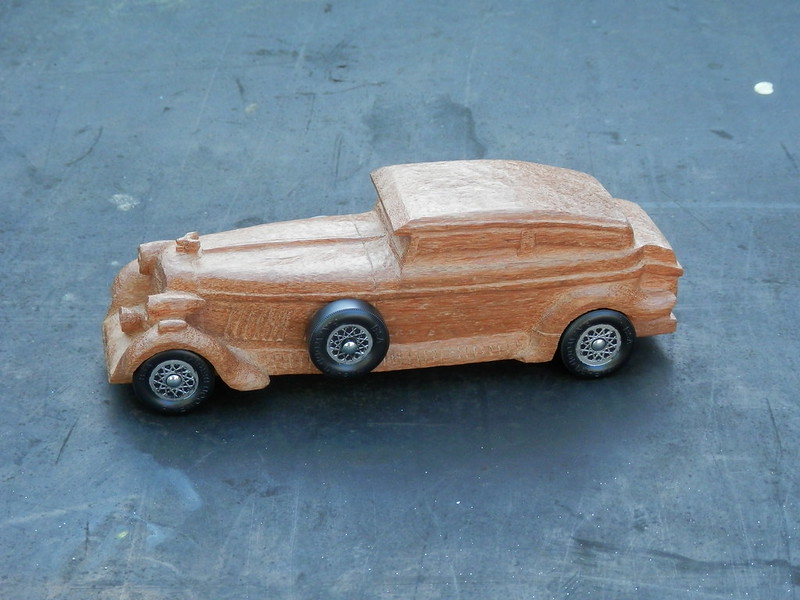
The Wall Street Crash of 1929 affected Bentley’s business greatly and the Great Depression reduced demand for the company’s expensive product. Bentley introduced the 8-Litre in October of 1930, which was a grand car for the ultra rich. The 8-liter Bentley appeared in 1930, almost as quiet as a Rolls-Royce, just as impressive, and with tremendous performance. One hundred cars were sold compared to Bugatti selling three cars of his equivalent model during the same period. The success of the 8-Litre proved to be a disaster for W.O. Bentley’s career since the car was strong competition for the Rolls-Royce Phantom II.
Financial problems prevented Bentley from entering the Le Mans race in 1931 and when July mortgage payments fell due, Barnato advised lenders that he was unable to meet their debts and the company went into receivership. Plans were drawn up for Napier and Son to buy the assets of the Bentley Company with the idea to make the new 8-litre into production with the car called the Bentley-Napier. When the negotiations were complete, there was a formal requirement for both parties to meet in court and finish Bentley’s bankruptcy. However, a competitor named British Central Equitable Trust offered a counter proposal and outbid Napier in a sealed bid auction, and Bentley Motors was awarded the British Central Equitable Trust Company for £125,000. The entire maneuver was designed to surprise Napier’s counsel and it was executed perfectly. A week later W.O. Bentley learned that the mysterious British Central Equitable Trust was a front for Rolls-Royce. When the 8-liter Bentley appeared in 1930, Rolls-Royce had cause for concern. It was not difficult to see what effect a Napier-Bentley partnership would have on the future prosperity of Rolls-Royce.
Later still W.O. Bentley learned that the service agreement with Bentley was still in effect, so he was considered part of the company assets together with the office furniture. Barnato received around £42,000 in return for his shares in Bentley Motors, having bought a sizeable stake in Rolls-Royce just before Bentley Motors was liquidated. By 1934, Barnato was appointed to the board of the new Bentley Motors.
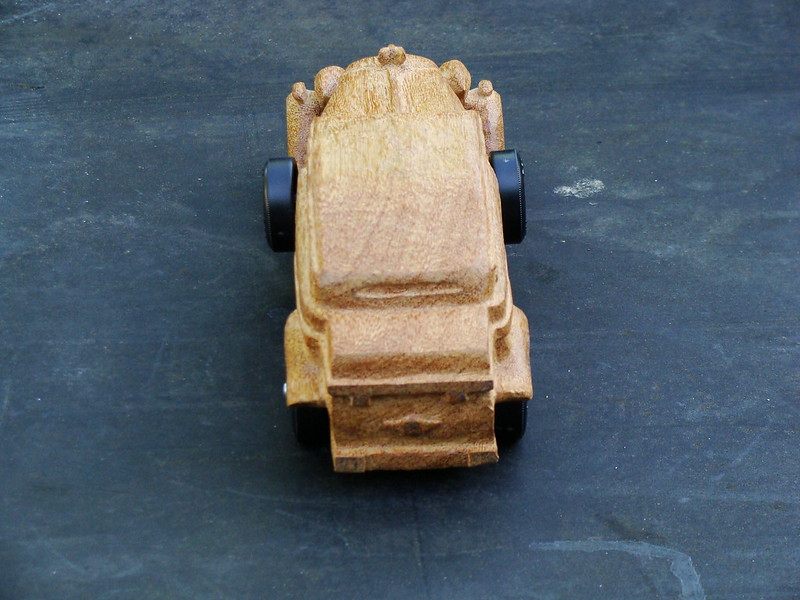
The buyout of Bentley Motors was part of a personal vendetta between W.O. Bentley and Lord Earnest Walter Hives, who was the one-time head of the Rolls-Royce Aero Engine division and chairman of Rolls-Royce Ltd. The disagreement between the two men began in 1914 when Bentley was given a commission in the Royal Naval Air Service and sent to tell manufacturers of his knowledge and experience modifying DPF car engines with aluminum pistons.
Bentley Motors Ltd. was formed in 1931, and owned entirely by Rolls-Royce. Production stopped for two years and the Cricklewood factory was closed and sold. The winter of 1931 was hard for W.O. as he lost all forms of personal transportation and his wife divorced him. A new Bentley 3 ½ Litre was introduced in 1933 built at the Rolls-Royce works in Derby and it was promoted as the “Silent Sports Car”. The car was a variant of the Rolls-Royce 20/25, which was the smallest and cheapest model. This disappointed Bentley’s traditional customers, but the car was well received by many others. All Bentley’s produced from 1931 until 2004 used inherited or shared Rolls-Royce chassis and adopted Rolls-Royce engines. The car was intended to compete on quality and grace rather than the sporting reputation that had been the cornerstone of the pre-1931 Bentley Motor Company. The cars retained their famous curved radiator shape based on earlier Bentley models, but in all meaningful respects these cars were clearly Rolls-Royces. Priced beyond the reach of all but the wealthiest customers, the cars were not remarkable performers, however the unique blend of style and grace proved popular with the inter-war elite. High-end car companies like Bentley and Rolls-Royce did not supply complete cars at this time, but sold rolling chassis that were complete from the instrument panel forward, delivered to the coachbuilder of the buyer’s choice. The largest dealerships had standard designs built and held them in stock for potential buyers. Bentley chassis production ceased in 1939 and the last few cars bodied were registered in 1941. Over 70% of the cars built between 1933 and 1939 were still in existence 70 years later.
W.O. joined Rolls Royce as the court had ordered, but Rolls-Royce isolated him by using him to test drive these new inferior Bentley’s across the continent and as a liaison with customers. While he was testing the new prototype Derby 3 ½ Litre, he could only comment on the design becoming sequestered from the new car that would bear his name. W.O. did admire their achievement and stated “Taking all things into consideration, I would rather own this Bentley than any other car produced under that name”. Unhappy with his role at Rolls-Royce, W.O. Bentley left and joined the automobile company Lagonda in April of 1935 when his contract expired.
The 1935 Le Mans race was won by an M45R Rapide Lagonda with a Meadows engine. A week later Lagonda announced that is was saved from receivership by Alan Good. W.O. joined Lagonda’s Board of Directors as the technical director. W.O. moved the majority of Rolls Royce’s racing department staff to Laganda and went racing. W.O. wanted to make a V12 engine and launched the project in 1937. Lagonda’s financial problems forced staff to leave before development of the V12 was complete; however, the Rapide Lagonda was equipped with the new motor and was shown at the New York Motor Show in 1939, as the most expensive car at the show
During the war, W.O. worked on armaments at Lagonda, but towards the end, he began development of a new straight-6 engine with dual overhead cam shafts and dual carburetors because it was clear that the V12 would not be needed in the post war market.
The chairman of Lagonda announced that work had begun on the new 2 ½ litre motor designed by W.O. Bentley in August of 1947, but material shortages, production difficulties and a double purchase tax forced those plans to be cancelled and another layoff ensued. A month later it was announced that Lagonda had been bought by David Brown and Sons (Huddersfield) Limited, a gear manufacturer who had bought Aston Martin a year earlier. The two company’s production was combined at Feltham in Middlesex. Brown had purchased Lagonda to gain Bentley’s expertise and placed Bentley’s new motor in the Frank Feeley designed DB2.
W.O. moved to Armstrong Siddeley and designed another twin cam 3 litre engine before retiring. W.O.’s team had worked on the Sapphire project, but did little for the car that was actually produced in 1952. Production costs of W.O.’s engine were reported to be too high. W.O.’s involvement brought respect from engine designers and manufacturers for both him and the final Sapphire car. Bentley died at Woking Surrey in August on Friday 13th, 1971 just before his 83rd birthday.

After World War II Rolls-Royce built a rugged factory built steel body for a standard complete car to meet the post war demand. Rolling chassis were still available to coachbuilders until the end of production of the Bentley S3. Rolls-Royce focused on its aero-engine production which left limited space for motorcar production at the Derby factory. Production of both Rolls-Royce and Bentley cars moved to the ex-wartime factory in Crewe.
In 1946 Bentley announced the production of its first luxury car named the Mark VI, which was the first car from Rolls-Royce with a complete car assembled at their factory and features all steel coachwork, although chassis were still supplied to custom coachbuilders. These cars were very expensive and but successful, however they were constructed from inferior steel forced on the company because of government post war controls. Europe was experiencing a steel shortage when the Mark VI was introduced and there was a shortage of cars for sale. Used cars actually increased in price as a result.
Rolls-Royce created the Silver Wraith in 1946 by shortening the wheelbase of the Mark VI and using a different engine. Rolls-Royce put a larger trunk on the car in 1949 and created the Silver Dawn. Rolls-Royce used the same longer truck idea on the Mark VI body in 1952 and that car became known as the R-Type Bentley.

Another Bentley Mark VI chassis was developed by H I F Evernden and J P Blatchley in 1951 carrying a more powerful engine and modified transmission. By special arrangement with Bentley 2-door bodies were fitted with a lower frontal area and light weight construction with the first body made by H J Milliner.
This car was ten-percent lighter than the standard car and it became the most expensive and fastest production four-setter car in the world at the time. The Continental fastback coupe was designed and built at the Crewe factory for the home market with the majority of the cars produced being right-hand drives.
The chassis shared most of its components with the R-Type, but rolling chassis were sent to H. J. Mulliner and Company and Park Ward for the body construction.
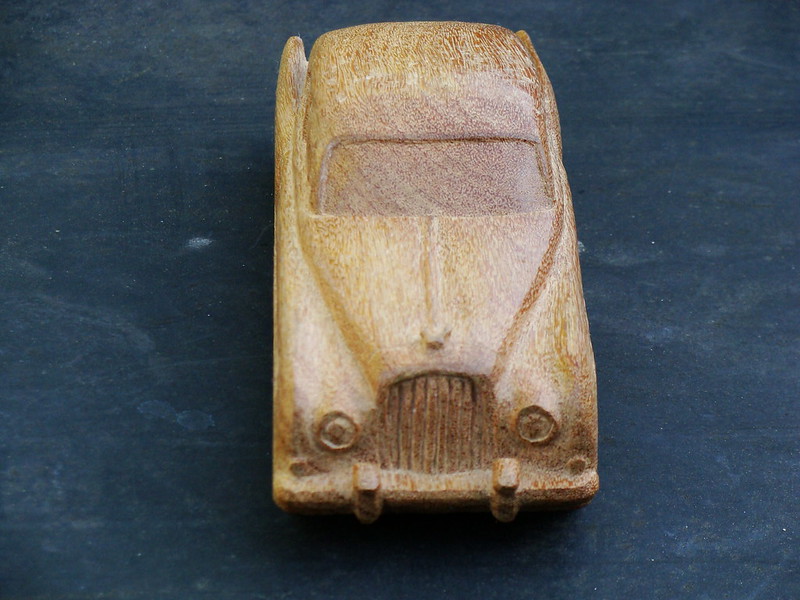
Rolls-Royce acquired the coach building firm H. J. Mulliner & Co. in 1959, and in 1961, merged it with the coachbuilder Park Ward, which Rolls-Royce already owned since 1939, to form Mulliner Park Ward Ltd. The Bentley S3 Continentals were produced at the Park Ward factory in Willesden, North London; and the H. J. Mulliner & Co. plant was closed.
The S3 Continental was strictly coach built with most of the bodies modified from the Mulliner style with the most visible difference being the four canted angled headlights. The final S3 was delivered in 1966 when the Rolls Royce Silver Shadow and Bentley T Series were created. Like earlier Continentals, the bodies were made from aluminum and combined with a more powerful engine and higher gearing made a remarkably fast car. The four-door Continentals bodied by H. J. Mulliner were known as the Flying Spur; however other coachbuilders referred to their cars as “Flying Spurs” as well. Continentals were much more expensive and made in fewer quantities than the standard S3.
However, problems with the Rolls-Royce Aero engine development brought about the financial collapse of the company in 1970. Most exotic car companies had financial problems in the early 1970’s due to the oil crisis that gripped the planet. Rolls-Royce tried to seek assistance from the British government, but ended separating the car company from the airplane engine company naming the new company Rolls-Royce Limited. The company remained independent until it was bought by Vickers plc. in August of 1980. By this time Bentley’s sales had fallen badly with less than 5% of the cars carrying the Bentley badge. Vickers desired to return Bentley to its high performance heritage and produced the Mulsanne. Bentley’s sporting new image created new interest and Bentley sales increased. By 1991 the sales of both companies’ sales were about even.
Vickers announced that it had decided to sell Rolls-Royce Motors in October 1997 with the leading contender was BMW, who was already supplying engines and other components for Bentley and Rolls-Royce due to their long relationship building aero engines. However, their final bid of £340m was outbid by Volkswagen Group, who offered £413m. Volkswagen Group found that they bought the factory in Crewe and held the rights to the “Spirit of Ecstasy” mascot and shape of the radiator grill, but no rights to the Rolls-Royce name or logo.
In 1998, BMW started supplying components for new Rolls-Royce Silver Seraph and the Bentley Arnage. It was soon learned that BMW was able to terminate its supply deal with Rolls-Royce with 12 months notice, which was not enough time for Volkswagen to re-engineer the cars. BMW paid aero engine maker Rolls-Royce plc. £40m to license the name and the “RR” logo, which many thought was the most valuable property in the deal since Bentley was outselling Rolls Royce at the time. A new deal was negotiated where BMW would supply engines and allow Volkswagen to use the Rolls-Royce name from 1998 until 2002; and after January 1, 2003, Volkswagen would be the sole provider for Bentley, and Rolls Royce would move its production their Goodwood plant in West Sussex.
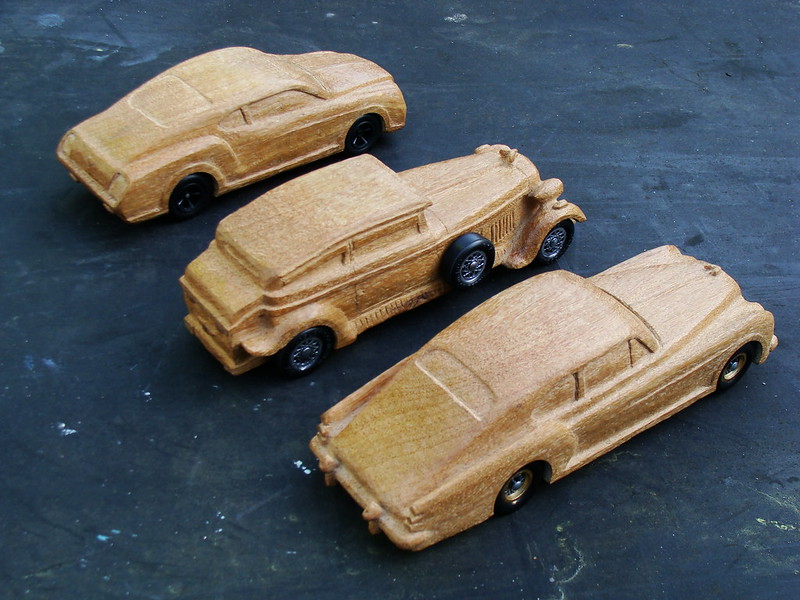
Volkswagen acquired the business and began spending 2 billion to modernize the Crewe factory and increased the production capacity. Bodywork is now sent to the Crewe factory ready for painting and assembly with parts coming over from Germany. However, Bentley aficionados refer to the last six decades of the company as “The blackest of all”.
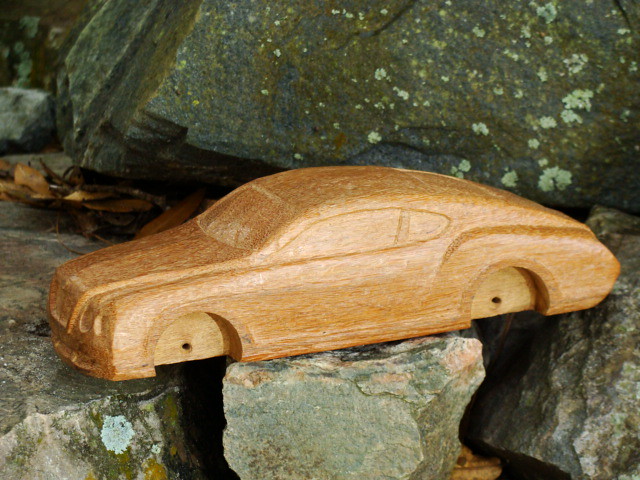
In 2002 Bentley presented Queen Elizabeth II with the official state limousine to celebrate her Golden Jubilee. The following year the Bentley Azure 2-door convertible ceased production as Bentley introduced a new Bentley Continental GT which was a large luxury coupe powered by a V12 engine.
The demand was so great that the Crewe plant was unable to meet the orders and a waiting list of over a year was created for cars to be delivered. Bentley created a new 4-door car called the Flying Spur, but it was made at the Transparent Plant in Germany until the Crewe plant could absorb the production in 2006.
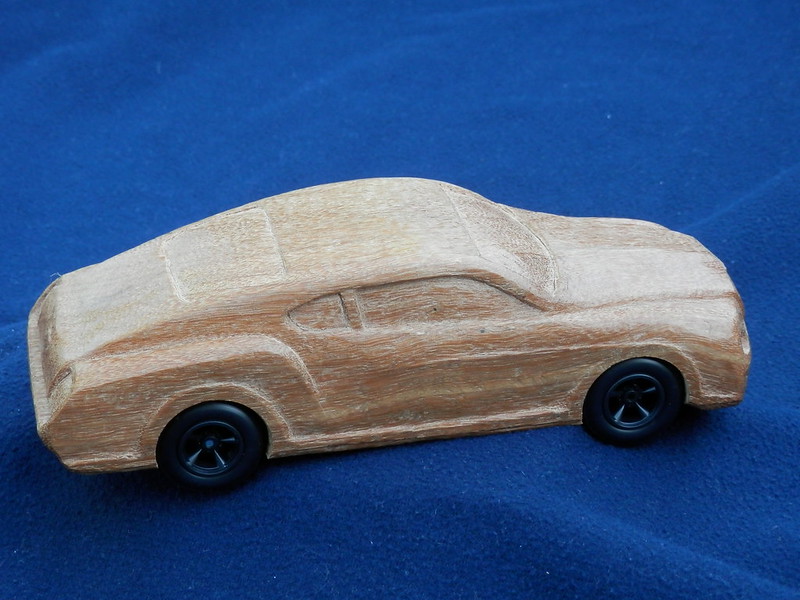
Bentley introduced several new models including a new Azure, the Continental GTC and a Zagato modified GT named the GTZ. In 2009 Bentley introduced a new Continental Supersport at the Geneva Auto Show featuring an environmentally friendly flex-fuel technology. Bentley sales and profits continued to increase and Bentley made over 10,000 cars for the first time in 2007. However global sales plunged 50 % in 2009 due to the world wide recession. The Crewe plant was shut down during March and April to control costs.
Even though the sales increased the next year, the operating losses grew and the workers staged a series of protests over a proposal for compulsory work on Fridays and mandatory overtime during the week. In 2011 the company finally returned to profitability, but still had an excess of inventory at the factory.
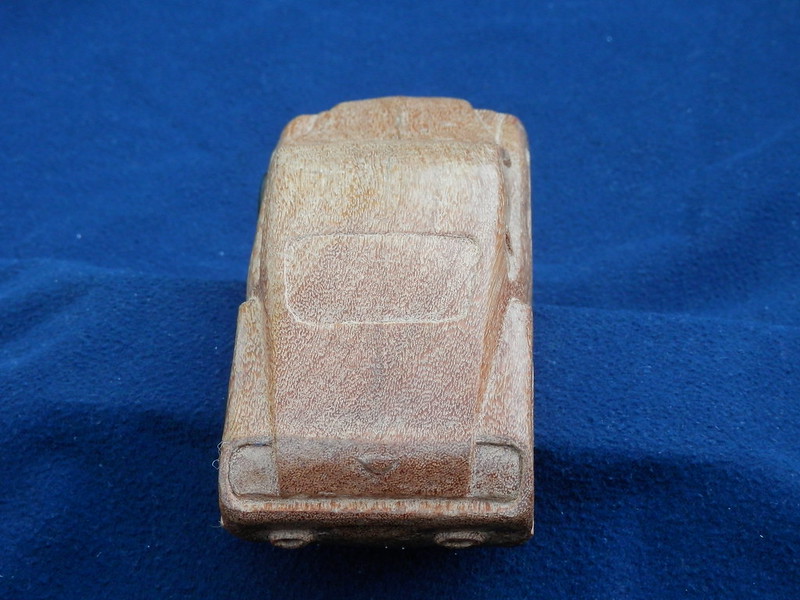
In 2004 I was looking for a new source to find ideas for make my carved cars and I was looking for a good car magazine. I had been using the regular car magazines like Road and Track, Car and Driver, and Motor Trend as the source for most of my designs, but I learned that these magazines did not give me the exotic cars that I was looking for. I had found one magazine called Classic Automobile Registry that I liked and I had subscribed to it. The magazine had great cars with pictures of the front, side and back of the cars which is perfect for my carving. However, the magazine did not find many readers and went out of business before my subscription was complete. As a result, the publisher sent me a new magazine to see if they could switch the remainder of the subscription with the new magazine named Auto Aficionado which had just been published. I looked at the cover and saw the front of a Bentley Speed Six, and I did not recognize the car. I have not been exposed to many old British cars of this time period, so I was unimpressed and I did not think I would find cars to carve in the magazine. However once I looked through its pages and saw the pictures and the types of cars it featured, I was impressed. It provided great insight into some of the world’s finest cars for fine automobile collectors and enthusiasts. Once I read the feature article on the Bentleys, I was hooked. I had never heard of the famous Blue Train Races or the Bentley Six Speed. I was interested in carving the Bentley GT, which was introduced earlier that year, and the car was part of that featured article. However, once I read the history of these magnificent cars, I decided to carve them all as a set since they related to each other in terms of design.
Finding other sources for the images used to make the patterns was not difficult for the Continentals, but the Nutting-bodied Speed Six did not have many sources from which to choose. I created the pattern for these cars in the same way that I created the racing cars with the raised height to accommodate the track. I did not know the dimensions of these cars so I drew the pattern based on visual observations.
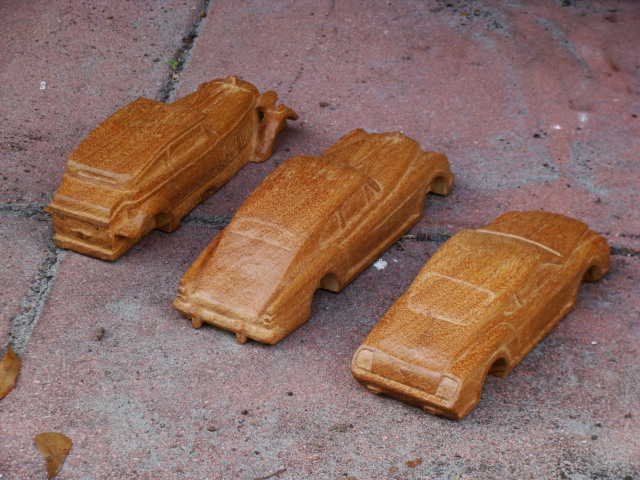
I choose to carve the cars from a single piece of Mahogany wood that was given to me by a friend who was in the clearing and fence business named Mark Woodruff. Mark had a Woodmeiser Portable Lumber Mill where he cut his own lumber for his fence business. Mark would find strange wood while he was clearing land and he would cut some scraps for me to use, or he would destroy old structures and find wood inside and take it home and use it. The mahogany board I used to make the Bentley’s is one of the boards he found on a job and it was long enough for me to get all three cars out of the same board. I call the wood “mahogany” because of the tight grain structure and Mark had told me the wood was mahogany. The wood was hard with no dramatic grain coloration, so I felt it would be perfect for the job. I wanted to make the cars out of the same type of wood so they would relate visually. I felt the light color would help accent the carved details and make the Bentley’s stand out as a group when displayed with other cars. I felt the wood worked well for all three cars since they all have distinct details individual to each car.
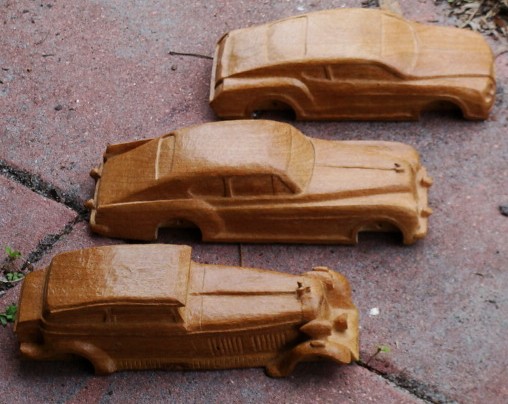
The story of W. O. Bentley and Bentley Motors is a story of survival as much as a story of chasing dreams and the cost of making those dreams into reality. The tales of jealousy and revenge were overcome by the tenacity of persistence and holding fast to the deep belief in both the original idea and in one’s natural abilities were what made these cars exceptional in the first place. Bentley Motors as a company had rough times and went bankrupt on several occasions, but the quality of the product never wavered from the concept of W.O. Bentley’s original motto; “Building a good car, a fast car, the best in its class”.
Today Bentley products continue to sit at the top of their respected automotive genre after more than 90 years in the business and the marquee continues to thrive. I was inspired by the story of the Bentley’s and their founder and I feel I can relate to the problems of chasing a dream. I have worked on carving cars for over 25 years and the habit has endured a divorce, going broke, having all my tools stolen and simply finding both materials and the time to carve as I make a living while dealing with financial and family issues. However through all my personal successes and failures, I have kept craving cars and improving the process the entire time. It is my hope the cars that I have created will stand the test of time as well as a Bentley.
